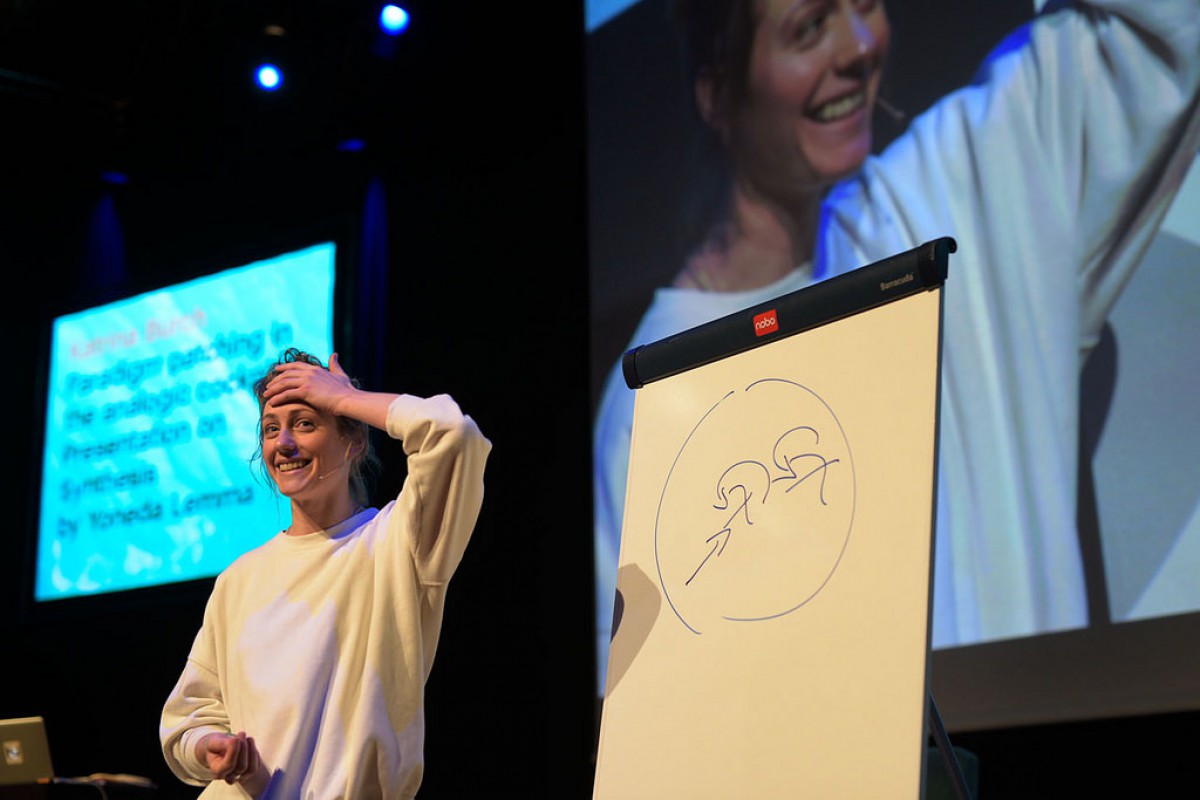
Katrina Burch, Sonic Acts Academy, photo by Pieter Kers
By
Nastassja Simensky
Katrina Burch navigates a space between the empirical and the poetic. Archaeology, mathematics, and sound are entwined through listening and philosophy.
The ultrafine tuning of the inner-ear, combined with the fact that she is synesthetic [1] means that Burchs perception and understanding of sound and her capacity to listen is more physical and intricate than most. Katrina refers to this as feeling like her perceptive organs remain ‘un-pruned’ by our current evolutionary state.
Exploring synesthetic ways of listening drew Katrina to music and the study of sound: “You can think about sound spatially in terms of atmospheres and environments that are created with different layers," she says. "Each sound work tells a narrative listeners can participate in, they can get enveloped in this sound space”
We commonly orientate ourselves using visual cues and maps, speculating based on our current knowledge and understanding of a space, which alters over time. It is similar with listening. Sound is heard based on previous experience, hearing something new changes this perception again.
Katrina suggests that sound has a physicality which can be shaped by a listener. By embracing the plasticity of sound, she suggests a listener can create fictions and conceptions of reality in the same way an archaeologist builds narratives from the features and artefacts in the field.
Burch's speech matches the density and texture of her writing and her music, reflecting the way she experiences sound as a shifting, layered landscape. It is stratigraphic [2] in that each sonic artefact is part of a larger listening experience.
“Listening is not limited to music, as much as thinking is not limited to humans” [3] Burch argues. She says that listening opens up a theoretical space for thinking and that since this is not limited to humans, it is a way of thinking outside of the restrictions of human philosophical study of the nature of being, becoming, existence, or reality.
Field archaeology is used as an analogy for abductive logic. The archaeologist does no know in advance what they are looking at; they uncover information through setting a hypothesis and excavating, mapping the absence of material in order to understand what is there. A listener is constantly working to uncover and follow the geometry of sound. Each experience of sound is equivalent to an artefact – a ‘sonic artefact’. Typology employed in archaeological lab work informs how Katrina considers the composition, perception and decoding of sound.
“Computer music allows us to typologise sound much more easily, I would like to create this [typology] to create a new language for sound and compose sound experiences to be navigated and excavated in the future through listening.”
When we navigate a space by listening, that’s a cognitive mapping rather than optical – unless, of course, you’re synesthetic.
Footnotes:
[1] Synaesthesia is a condition where a sensation in one of the senses, such as hearing, triggers a sensation in another. Katrina can see sound as colour as well as hearing it.
[2] Stratigrapic refers to the layering (stratification)of matter. This is usually rocks or decayed organic matter.
[3] Katrina Burch, Sonic Acts 2016, Paradigm patching in the analogic cockpit — Presentation on Synthesis